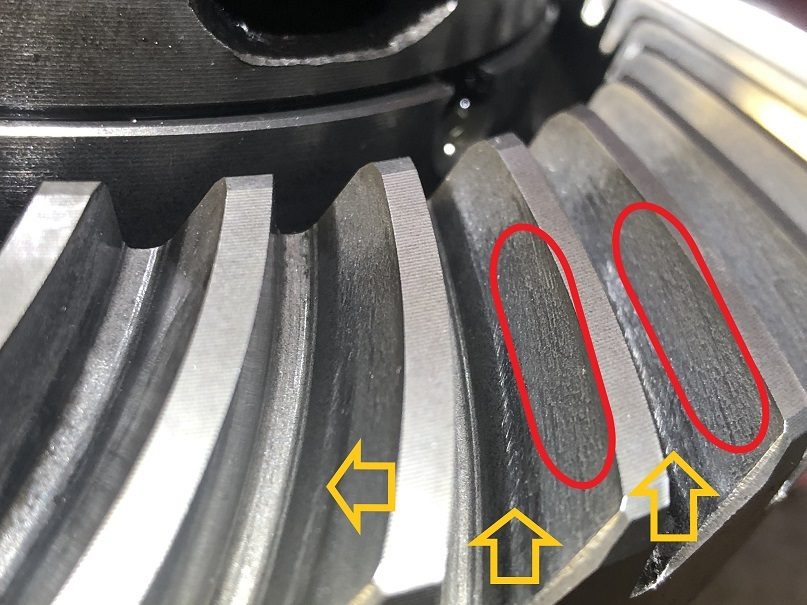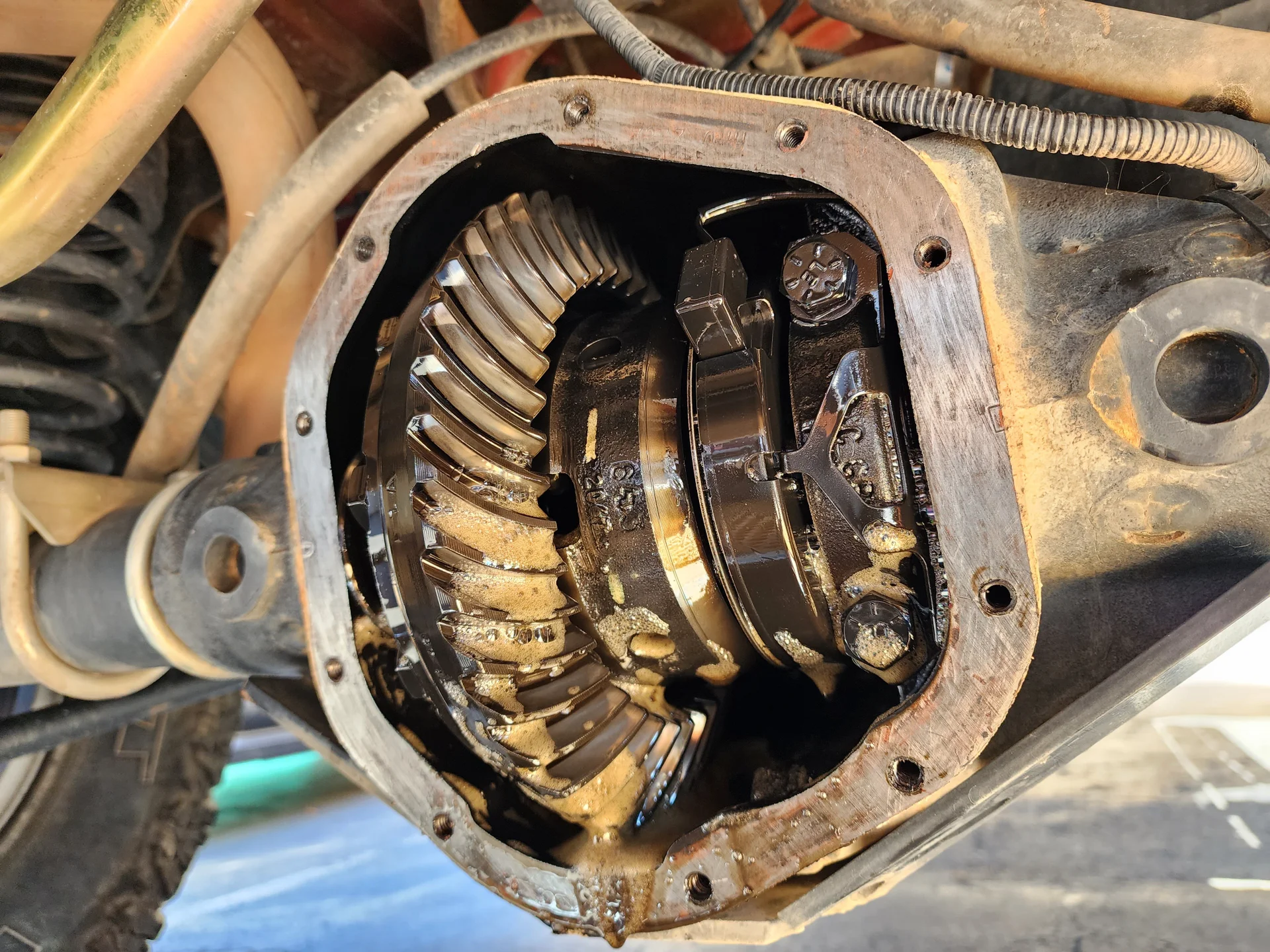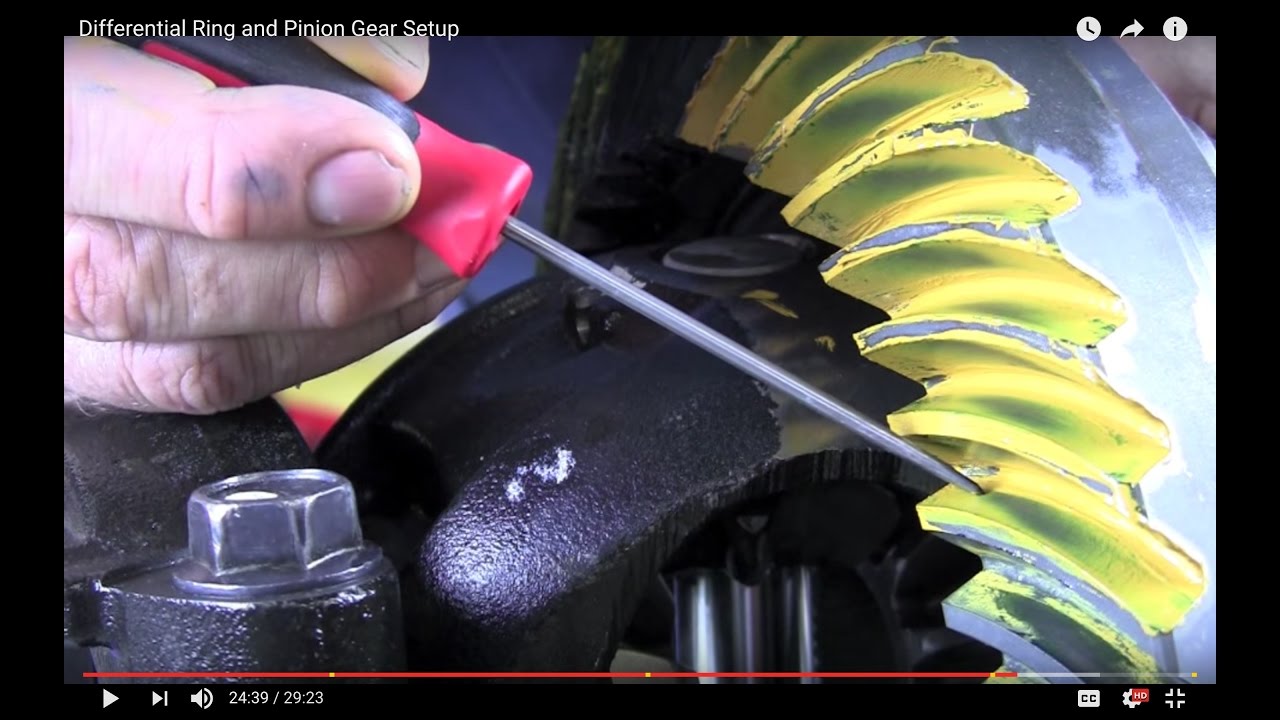Table of Contents
Restore Your Differential’s Performance: Master Gear Mesh and Shim Adjustments for a Smooth Drivetrain!
1. Why Rebuild a Differential?
The differential distributes torque between wheels, allowing them to rotate at different speeds. Over time, wear and tear compromise its function:
- Worn gears: Cause noise, vibration, and reduced efficiency.
- Case warping: Disrupts gear alignment.
- Oil leaks: Damaged seals and gaskets.
Symptoms of Failure:
- Whining or howling during acceleration/deceleration.
- Vibrations at specific speeds.
- Metal shavings in differential oil.

Key Fact: Incorrect gear setup can shorten differential lifespan by 30–50%.
2. Tools and Materials 🧰
| Tool | Purpose |
|---|---|
| Feeler gauge set | Measure gear backlash |
| Dial indicator | Check pinion depth and runout |
| Bearing puller | Remove pressed bearings |
| Torque wrench | Tighten bolts to spec |
| Shim kit | Adjust gear mesh and bearing preload |
| New seals/gaskets | Prevent leaks |
Pro Tip: Always refer to the factory service manual for your vehicle’s specs.
3. Step-by-Step Differential Rebuild
Step 1: Disassembly
- Drain the differential oil and remove the differential from the axle.
- Disassemble the case, labeling components for reassembly.
- Remove the ring gear, pinion gear, bearings, and carrier.
Note: Clean all parts thoroughly and inspect for damage.
Step 2: Inspect Components
- Gears: Check for pitting, chipping, or uneven wear.
- Bearings: Replace if gritty, noisy, or loose.
- Case: Ensure no cracks or warping.

Step 3: Install New Components
- Press new bearings onto the pinion and carrier.
- Install the pinion gear and adjust pinion depth with shims.
- Set the ring gear onto the differential carrier.
4. Gear Setup and Shim Adjustments
Critical Measurements:
- Backlash: The gap between the ring and pinion gear teeth.
- Ideal range: 0.08–0.15 mm (varies by model).
- Pinion Depth: Determines gear mesh alignment.
- Bearing Preload: Ensures smooth rotation without excess play.
How to Adjust:
- Set Pinion Depth:
- Use shims behind the pinion bearing to achieve factory-specified depth.
- Measure with a dial indicator.
- Adjust Backlash:
- Loosen carrier bearing caps and shift the carrier sideways using shims.
- Measure backlash with a dial indicator at three points on the ring gear.
- Check Gear Pattern:
- Apply marking compound (e.g., Prussian blue) to gear teeth.
- Rotate gears and inspect the contact pattern:
- Ideal pattern: Centered on the tooth face.
- Too deep/shallow: Adjust pinion depth.
- Heel/toe bias: Correct backlash or shim thickness.
5. Common Mistakes to Avoid
- Ignoring backlash: Incorrect backlash causes noise and premature wear.
- Over-tightening bearings: Leads to overheating and failure.
- Skipping preload checks: Loose bearings create play; too tight causes friction.
- Reusing old shims: Always use new, precision shims.
Case Study: A Jeep Wrangler’s differential failed after 1,000 miles due to improper pinion depth.
6. Reassembly and Testing
- Apply differential oil to all components during reassembly.
- Torque bolts to spec (e.g., ring gear bolts: 70–100 ft-lbs).
- Refill with quality gear oil (e.g., 75W-90 GL-5).
- Test for smooth rotation and recheck backlash.
Tip: Drive gently for the first 500 miles to allow gear “break-in.”
7. When to Call a Professional
- Complex electronic differentials (e.g., eLSD or Torque Vectoring).
- Severe case damage or helical gear repairs.
- Lack of specialized tools (e.g., hydraulic press).
8. FAQs
Q: Can I reuse old shims?
A: No—shims deform under load. Always replace them.
Q: How do I know if the gear pattern is correct?
A: The contact should be centered on the tooth. Too close to the heel/toe indicates improper setup.
Q: What oil should I use?
A: Synthetic gear oil rated for your differential type (open, LSD, or locker).
9. Conclusion
A proper differential rebuild demands precision in gear alignment and shim adjustments. Cutting corners risks costly failures. Invest in quality parts, follow factory specs, and prioritize gear pattern verification.
🚗 Share this guide to help fellow gearheads keep their drivetrains running smooth! 🚗
Expand Your Automotive Knowledge 📝
Explore 500+ Free Expert-Curated Guides
🚗 Learn New Skills
From basic maintenance to advanced repairs — clear, actionable tutorials for every skill level.
🌍 Access Anywhere
Mobile-friendly guides with HD visuals. No downloads required.
- Guides & Tutorials
- Car Maintenance 101
- Diagnostics & Troubleshooting
- Seasonal Maintenance
- Budget-Friendly Repairs
- Electrical Systems Guide
- Car Safety & Reliability
- Tools & Product Reviews
- Routine Maintenance
- Car Modifications & Upgrades
- Buying/Selling Guides
- Eco-Friendly Car Care
- Advanced Repairs
- Car Laws & Compliance
- Emergency Repairs
- Future Car Tech



